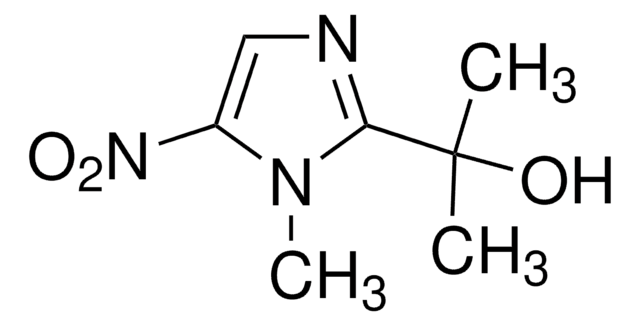46461
Metronidazole
VETRANAL®, analytical standard
Synonym(s):
2-Methyl-5-nitroimidazole-1-ethanol
Select a Size
Select a Size
About This Item
Recommended Products
grade
analytical standard
Quality Level
product line
VETRANAL®
shelf life
limited shelf life, expiry date on the label
technique(s)
HPLC: suitable
gas chromatography (GC): suitable
mp
159-161 °C (lit.)
antibiotic activity spectrum
Gram-negative bacteria
parasites
application(s)
clinical testing
format
neat
mode of action
DNA synthesis | interferes
Looking for similar products? Visit Product Comparison Guide
General description
Application
Recommended products
Legal Information
signalword
Danger
hcodes
Hazard Classifications
Carc. 1B - Muta. 1B - STOT RE 2
Storage Class
6.1C - Combustible acute toxic Cat.3 / toxic compounds or compounds which causing chronic effects
wgk_germany
WGK 3
ppe
dust mask type N95 (US), Eyeshields, Gloves
Choose from one of the most recent versions:
Already Own This Product?
Find documentation for the products that you have recently purchased in the Document Library.
Customers Also Viewed
Our team of scientists has experience in all areas of research including Life Science, Material Science, Chemical Synthesis, Chromatography, Analytical and many others.
Contact Technical Service













